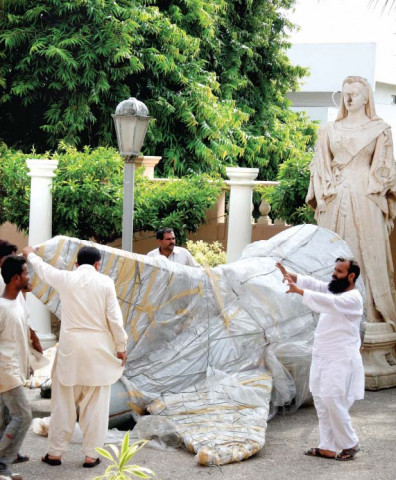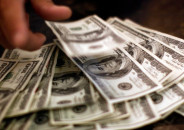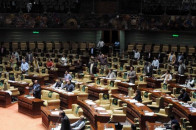Museum moves aside to let new history be made
For the first time since it opened, the Mohatta Palace Museum will host contemporary art in 35-artist show.

“The Rising Tide” is, in the curator’s own words, going to be the first contemporary art exhibition at the museum since its inception in 1999. More importantly, it is going to be an exhibition in a public museum space in Pakistan - something of a rarity, considering that while art galleries have mushroomed across the country, museums remain something akin to a myth.
“It is really important for the public to see the art produced in their country. With a lack of public spaces, only a few select people get to see contemporary art,” said Khan, who hoped that this exhibition attracts an audience that goes beyond the usual gathering of people.
“The Rising Tide” is going to be peppered with discussion platforms, readings, and educational outreach projects. It will continue over a period of three months and will address the practices of contemporary artists within urban landscapes.
“It is important that a museum showcases a theme-based exhibition,” said Khan. “I researched to develop a framework that fell in line with the artists’ concerns. With the work revolving around the theme of urban landscapes, we found a chance to show people the ground realities we experience.” All artists have a connection to their surrounding space. It is important to depict an artist’s concern with regards to the urban space.
“For me, after living in Karachi for over two decades and practicing art as well as teaching and being part of residencies, it was important to see the practice from the angle of a curator to understand how art is made,” said Khan.
Khan went on research trips to Lahore to look at works and discuss art with their creators. She went to collectors and artist studios to dig out work that she believed was relevant and needed to be cited. What she was looking for were artists whose work had evolved along with their concerns. The body of work, from paintings to installations, that she managed to gather is, in her eyes, “relevant, important and interesting, a combination of landmarks pieces as well as smaller, humbler work”.
The museum allowed me to be very ambitious, she said. “I could never have dreamed of exhibiting six-feet-tall pieces at a gallery. Here I was able to explore all facets of our art practices.”
Along with the exhibition, the catalogue, “a fantastic documentation of over 100 works and seven essays on art”, has taken up an equal amount of work.
“I did not want to compromise on the images,” said Khan, who added that a lot of hard work has gone into the catalogue to make sure that an artist’s voice, which is mostly missing in shows and exhibitions, could also be heard.
Published in The Express Tribune, October 20th, 2010.



















COMMENTS
Comments are moderated and generally will be posted if they are on-topic and not abusive.
For more information, please see our Comments FAQ